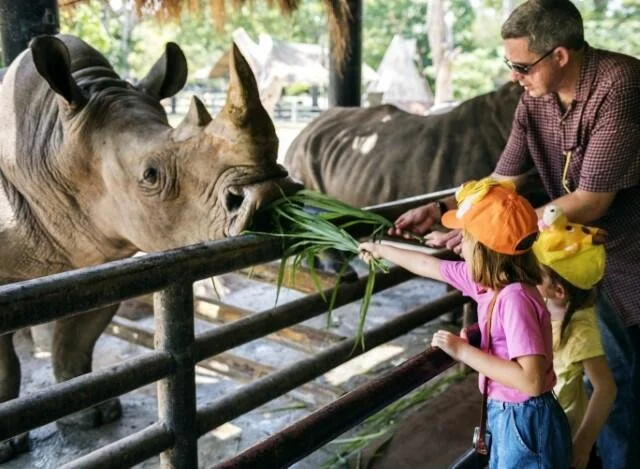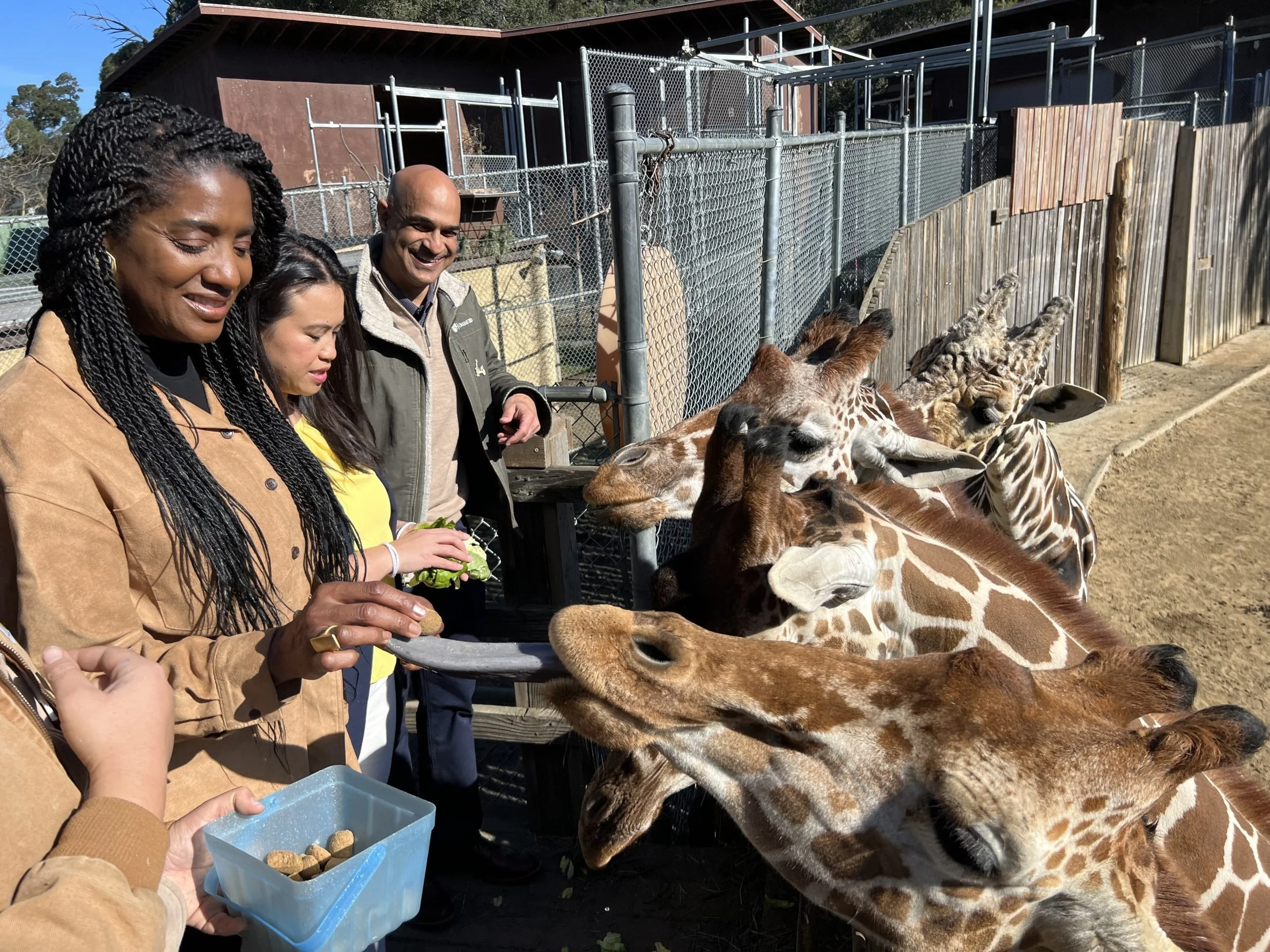How Bay Area Zoos Benefit Humans and Animals
Why you should go to Bay Area zoos.
“Some people might say that animals should be able to live in the wild and not in zoos. San Francisco Zoo is preparing and educating the animals so if there is a possibility for the animals to return to their natural habitat, they will be prepared.”
Eunice Hui was explaining to me how she helps run the Oakland Zoo, when suddenly, “SQUAWK!” the Amazon Parrot on her shoulder named Brock interrupted our conversation again. By the way, I bet that Brock has more YouTube followers than you. If you don’t believe me, go check “Brock Sings the Blues” and see for yourself.
Eunice Hui started working with animals by volunteering at the Wildlife Education Center. Right out of college she got a job for Butterfly World. Then she became a keeper at the Oakland Zoo in charge of all the birds. Just recently about two years ago, she transitioned to the education department.
Many of you might be thinking that Zoos are where animals suffer and the keepers treat them badly. But that’s not true. Eunice told me, “As a keeper your main job is to do a lot of animal husbandry, you basically need to know the natural history of animals under your care that will help you to give the best care.”
Most of the zoo keepers are trying their very best to help the animals keep as healthy as possible. Also they try to get the animals to engage in their own medical behaviors on their own. They don’t force them so that way it’s less stressful for the animals and a lot less stressful for the keepers.
On the other side of the Bay Area at the San Francisco Zoo, they have a whole department dedicated to animal wellness and conservation. A volunteer at San Francisco Zoo, Marina, told, “Because we can provide good care for example, proper nutrition, and healthcare, most animals in zoos easily outlive their species in the wild.”
Some people might say that animals should be able to live in the wild and not only in zoos. San Francisco Zoo is preparing and educating the animals so if there is a possibility for the animals to return to their natural habitat, they will be prepared.
In Dave Hone’s “Why Zoos Are Good,” he explains, “Zoos protect against a species going extinct.” Keeping animals in the zoos provides backup populations. Zoos provide a safer place to study animals, and nothing can easily affect the animals' habitat, such as climate change, human development, and changes in the food chain.
Safari West is a 400-acre private wildlife preserve located 12 miles north of the city of Santa Rosa in Sonoma County, California. Unlike a regular zoo, Safari West transports you to “Africa,” where you can experience amazing animals like giraffe, antelope, rhino, elephant, and lion.
Safari West zookeepers named Erika Defer and Tammy Cooke gave me interesting pieces of advice for being a zookeeper.
“Usually any job that is a zoo keeping job you need to have a minimum of a Master’s Degree.” Wow! Do you want to be a zookeeper when you grow up? Well, good luck spending 7 years of your life in school.
Erika Defer went on to explain that in order to be a zookeeper, being able to communicate well with others is very important. “Everybody in this field truly just wants what’s best for these animals, and so the more people that we have invested, the more people want to expand that knowledge base that benefits every single person and animal.”
So maybe next time you visit a zoo and you see a zookeeper walking around, you can try to stop them and ask questions. Unless they are on their way to something that’s extremely time sensitive, like a gang of meerkats desperately screaming for their supper, they will be more than happy to answer your questions and share their experience. That’s a great way to spend your time if you are exhausted from walking around gigantic fields of animals.
Additionally she also told me that you should soak up every single experience that you can get, whether it’s paid or unpaid, because it will get you prepared for the job. You have to have basic and in-depth knowledge of every single animal that you work with so that you know when something’s wrong, what kind of food they’re supposed to eat, and so much more.
To add on, another zookeeper at Safari West named Nikki Smith mentioned that most of the zookeepers work their very best to keep their animals healthy. For example the keepers research about their animals natural histories to give them the best care.
You should also recognize what their temperature depends on, what their natural behaviors are, and, for instance, if they are a climbing animal. You always want to provide them with the best home you can give and try to mimic their natural behaviors and habitats.
Marina at the San Francisco Zoo recounts that “Nowadays zoos are more focused on showing how the animals use their habitat and what is causing their decline. For this reason we spend a lot of time designing exhibits to suit the animals’ needs.”
However, not all zoos are as nurturing as the Bay Area Zoos I interviewed. In “PAWS Sanctuary: Where Exploited Elephants Can Live Freely and Heal,” Courtney Fern says, after “a wild born African elephant experienced the trauma of her family being slaughtered during a cull,” she was abused for nearly a decade “at a roadside Zoo in California.” Thankfully she was rescued by Performing Animal Welfare Society (PAWS) in 1990.
There can be a good and a bad side to zoos. However, the majority of zoos like the Oakland and San Francisco Zoos, give comfort to the animals that have gone through a traumatizing experience. In the zoo there are no culls, and the animals won’t lose their family unless they are too old.
Zookeepers have an interesting relationship with their job and as Maxine Bradley explains, “Your life is outside of the job. However, zookeeper's lives are inside of work. They get to spend about eight hours working with their animals and doing what they enjoy.”
Works Cited
Fern, Courtney. “PAWS Sanctuary: Where Exploited Elephants Can Live Freely and Heal.” Nonhuman Rights, https://www.nonhumanrights.org/blog/paws-sanctuary/.
Hone, Dave. “Why Zoos Are Good.” The Guardian,
https://www.theguardian.com/science/lost-worlds/2014/aug/19/why-zoos-are-good.
Oakland Zoo. “Brock Sings the Blues.” YouTube, upload by Oakland Zoo, 15 May 2020,
https://youtu.be/Z-YbfFqU7tg.




